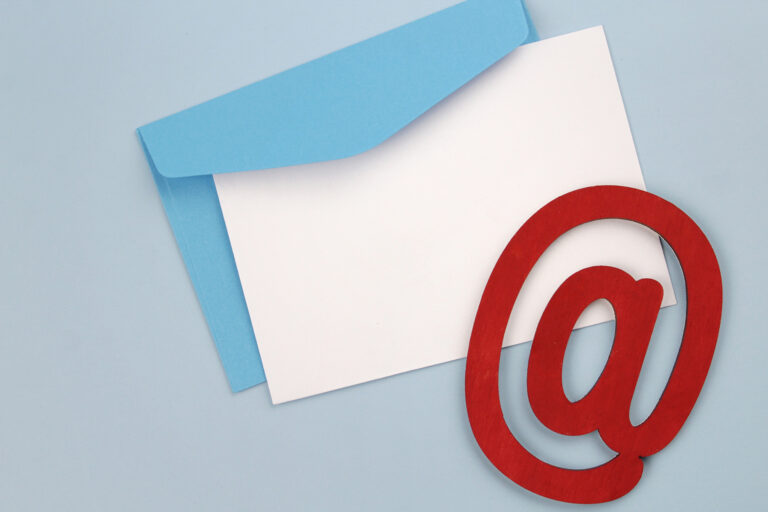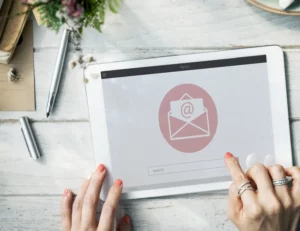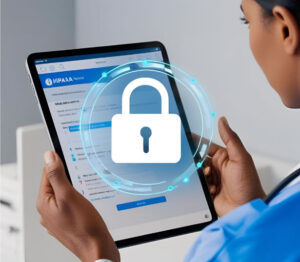Email remains one of the most common methods of communication—used daily by individuals, businesses, and organizations alike. However, this reliance on electronic correspondence brings with it a significant risk: sensitive information can easily be intercepted, accessed by unauthorized parties, or compromised in transit. This makes email encryption a critical safeguard, transforming plain, readable messages into encoded data that only authorized recipients can decode. Protecting your emails from cyber threats and privacy breaches is not just a good practice but an essential part of cyber hygiene.
Understanding whether your emails are truly secure is more critical than ever. The central question often arises: “Is my email encrypted?” Knowing the encryption status of your messages helps you assess your privacy and security posture. If your emails aren’t protected, sensitive data—even personal information, login credentials, or confidential business details—may be vulnerable to hacking or unintended disclosure. This guide aims to clarify what email encryption involves and how you can verify whether your email communications are adequately secured.
The Basics of Email Encryption
Email encryption is a process that transforms readable email content into a scrambled format, known as ciphertext, that cannot be understood without a special key. Think of it as converting plain text into a secret code that only the intended recipient knows how to decode. This ensures that even if the message is intercepted during transmission, it remains confidential and unreadable to outsiders.
There are different types of email encryption, each with its own mechanism and use cases. The most common are end-to-end encryption and Transport Layer Security (TLS). End-to-end encryption ensures that the message is encrypted from the moment it leaves the sender’s device until it reaches the recipient’s device, making it nearly impossible for anyone in between (like ISPs or hackers) to access the unencrypted content. TLS, on the other hand, secures the communication channel between email servers or clients during transmission. While TLS protects data in transit, it does not encrypt the email contents stored on servers or on the recipient’s device.
Both forms of encryption are vital components of digital security. TLS is often used by default in many email services to secure the connection. At the same time, end-to-end encryption offers a higher level of privacy, ensuring only the sender and recipient can access the message content. Recognizing the difference helps you better understand your email security and identify the most suitable encryption methods for your specific needs.
Signs Your Email Is Encrypted
Knowing whether an email is encrypted can sometimes be as straightforward as observing visual cues within your email client or service. A standard indicator for encrypted messages is the presence of padlock icons or secure connection notifications. For example, many email services display a padlock symbol next to the message or in the browser’s address bar, indicating that the connection to the email server is secure.
Additionally, some email clients and services provide explicit notifications or certificate details when an email is transmitted securely. For instance, a message stating “This connection is secure” or “Encrypted connection” assures you that the data transfer is protected via TLS. For end-to-end encryption, the presence of specific encryption icons, signatures, or prompts within the email can indicate that the message content itself is encrypted and, in some cases, digitally signed, confirming authenticity and confidentiality.
It’s important to note that visual cues alone may not always guarantee complete security. For example, the lack of a padlock icon doesn’t necessarily mean the message is unencrypted—it could be an indicator that only the connection is secure (via TLS), not the message content itself. Therefore, understanding these signs and verifying encryption details provides a more accurate picture of your email security landscape.
Checking Encryption in Common Email Services
To ensure your emails are properly encrypted, it helps to understand how to check their security status across popular platforms:
- Gmail: Gmail automatically encrypts emails in transit using TLS whenever possible. To verify that your Gmail email was transmitted securely, examine the email header or details pane. When you open an email, click the three-dot menu (More) next to the reply button, then select “Show original.” In the header, search for “Received: from” lines containing “TLS”—if you see “with TLS” or “TLS version,” your email was transmitted securely.
- Outlook: Outlook’s default behavior varies depending on your setup. For desktop Outlook clients, you can view the message options and email headers to verify encryption. In Outlook Web Access (OWA), click on the message, then select “View message source” or “View headers” to scrutinize the security details. Look for TLS-related indicators or encryption signatures that confirm the message was sent securely.
- Apple Mail (iOS & macOS): Apple Mail automatically attempts to use TLS for outgoing messages. When composing an email, tap the security icon (or look for an indication badge) to see if encryption is enabled. In the message headers, on macOS, you can choose “View > Message > All Headers” to see encryption details. When receiving emails, verify the “Received” headers for TLS information or check for a lock icon next to the sender’s name, which indicates secure transmission.
By routinely examining these details, you can verify that your email communications are adequately protected against interception and eavesdropping, and take additional steps if necessary to enhance your security.
Understanding TLS Encryption in Emails
Transport Layer Security (TLS) is the most widely adopted protocol for securing email transmissions over the Internet. Essentially, TLS creates a secure, encrypted “tunnel” between your email client and the email server, or between email servers themselves, ensuring that data cannot be intercepted or read by third parties during transfer. This encryption safeguards your email content from eavesdropping, man-in-the-middle attacks, and unauthorized access while the message travels from sender to recipient.
When you receive an email, you can often verify whether TLS was used by examining the email headers—specifically, the “Received” lines or “Security” information. Look for phrases like “with TLS” or “TLS encryption” in the headers, which indicate that the message was transmitted over a secure, encrypted connection. For example, a typical header might show: Received: from mail.example.com (mail.example.com [192.0.2.1]) by smtp.gmail.com with ESMTPS id abc123 …; look for “with ESMTPS” or “with TLS” at the end of the line.
Interpreting these headers helps you understand the security of your email as it is in transit. If TLS was used, your message was protected during transmission. However, it’s essential to note that TLS only encrypts the message while it’s in transit; it doesn’t encrypt the content stored on email servers or the recipient’s device. For maximum privacy, you need additional encryption methods, such as end-to-end encryption.
How to Ensure Your Emails Are Encrypted
To maximize the security of your email communications, take practical steps to ensure that your emails are encrypted appropriately. The easiest way is to leverage encryption-enabled email services, such as ProtonMail or Tutanota, or configure Gmail and Outlook to support S/MIME encryption. These platforms either automatically encrypt emails or make it straightforward to apply encryption manually, providing peace of mind that your sensitive information remains confidential.
For organizations or users seeking even greater security, third-party encryption tools such as GnuPG or Mailvelope can be integrated with existing email clients to enhance security. These tools enable users to generate cryptographic key pairs, manually or automatically encrypt emails, and digitally sign messages to verify identity. Proper configuration and user training are essential for effectively using these tools and preventing accidental data leaks.
In addition to encryption solutions, implementing robust passwords for your email accounts and enabling two-factor authentication (2FA) significantly enhances your security posture. Strong, unique passwords protect your keys and accounts from unauthorized access. At the same time, 2FA adds an extra layer of protection by requiring a second verification step—like a code sent to your mobile device—further mitigating the risk of hacking and account takeover. Combining secure passwords, two-factor authentication (2FA), and encryption creates a resilient defense against cyber threats.
The Role of End-to-End Encryption in Email Privacy
While TLS encrypts emails during transmission, end-to-end encryption (E2EE) takes privacy a step further by securing the actual content of the email from the sender to the recipient. With E2EE, the message is encrypted on the sender’s device using a unique private key. It can only be decrypted on the recipient’s device with their private key, ensuring that no intermediate servers, internet providers, or even the email service provider can access the plaintext content.
This added layer of security is crucial when handling highly sensitive information, such as legal, financial, or medical records. Unlike TLS, which only secures data in transit, end-to-end encryption guarantees that only authorized parties — the sender and recipient — can read the message, providing maximum privacy and data control.
To experience end-to-end encryption, users can utilize specialized email services like ProtonMail, Tutanota, or StartMail, which incorporate end-to-end encryption (E2EE) by default. For existing email clients, plugins such as Mailvelope (for webmail) and Enigmail (for Thunderbird), as well as integrated solutions like Outlook with S/MIME certificates, enable secure, end-to-end encrypted communication. Proper setup, including the exchange of public keys and verification, is essential for ensuring maximum privacy. Regularly updating keys and verifying identities maintains the integrity of this comprehensive security approach.
Challenges and Limitations of Email Encryption
While email encryption offers significant security benefits, it also presents specific challenges and misconceptions that users should be aware of. One common issue is the complexity of setup and management. For many small business users or individuals, configuring encryption tools like PGP or S/MIME can seem technical and intimidating, leading to hesitations or improper implementation. Misunderstanding these processes can result in the unintentional sending of unencrypted emails.
A significant misconception is that encryption guarantees total privacy. Many believe that if their emails are encrypted, they are entirely secure. However, encryption primarily protects data in transit or at rest from external threats; it does not prevent the recipient or email service providers from accessing the content once it has been decrypted. For example, most email providers—such as Gmail or Outlook—may store unencrypted copies of emails on their servers, and law enforcement or authorized entities can sometimes access these storage areas under legal process.
Another limitation is that not all emails are encrypted end-to-end by default. Many services secure the connection via TLS, but without explicit end-to-end encryption, the email content remains accessible to the service provider and possibly other parties. It’s crucial for users to understand what level of security their email setup provides and to avoid assuming total privacy. Recognizing these constraints helps make more informed decisions about when and how to use encryption most effectively.
Verifying Recipient’s Encryption Compatibility
Secure communication depends on both sender and recipient supporting compatible encryption protocols. Before exchanging sensitive information, it’s vital to confirm that the recipient’s email system can encrypt and decrypt messages securely. This is especially crucial for end-to-end encryption, where both parties need to share keys or certificates.
To establish a secure channel, coordination with recipients is key. For example, with PGP or GPG, users should share their public keys—preferably via verified channels—and verify the key’s authenticity (by comparing fingerprints or using trusted key servers). For services like ProtonMail or Tutanota, sharing email addresses and verifying identities usually suffice, since their systems handle encryption automatically.
You can also set up a secure key exchange process—for instance, sharing keys over a phone call or in person before exchanging encrypted emails—to prevent man-in-the-middle attacks. Regularly updating your public keys and verifying the identity of contacts ensures continuous trust in your secure communications. Establishing these protocols helps maintain the integrity and confidentiality of sensitive exchanges, avoiding the pitfalls of incompatible systems.
Final Thoughts
In summary, understanding whether your emails are encrypted and how they are protected is fundamental to safeguarding your privacy. Whether through TLS during transmission, end-to-end encryption for content privacy, or a combination of both, encryption plays a critical role in securing email communications against cyber threats and unauthorized access. Recognizing the signs of encryption in your email headers and verifying the security features of your email service are key steps in ensuring your messages are protected.
Proactively managing your email security—by implementing suitable encryption methods, verifying recipient compatibility, and maintaining best practices—builds a robust defense against data breaches and privacy violations. Staying informed and vigilant about your email encryption helps protect sensitive information and preserves your trustworthiness in digital communications.
Now is the time to take a closer look at your current email security practices. Regularly review your encryption settings, explore robust tools and services, and ensure you’re using the strongest available protections for your needs. Don’t leave sensitive data unprotected—invest in learning how encryption works and implement it properly.
If you’re unsure about your setup or want a tailored security strategy, consider consulting cybersecurity professionals or IT specialists who can provide expert guidance. Many cybersecurity vendors also offer straightforward solutions for small businesses to implement end-to-end encryption efficiently. Taking these proactive steps today can significantly boost your privacy, safeguard your reputation, and help you stay ahead of evolving cyber threats.






